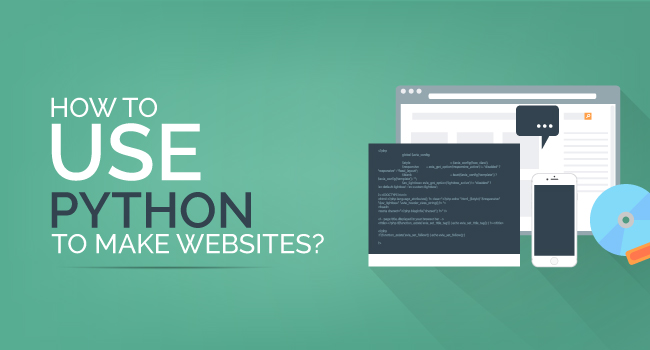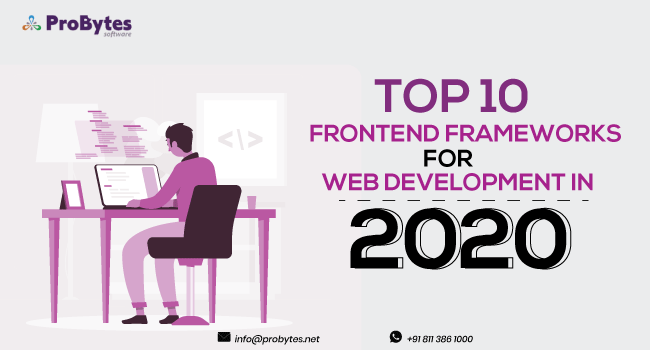Blog Category(283 Blogs)
13 Frequently Asked Questions On Python Web Development
If you are a student looking to hone your Python development skills or a software professional attending an interview for the role of a Python developer, the following are the most commonly asked technical questions along with answers on Python web development. Simply scan through these questions for you to assess your knowledge about Python and you are all set to impress your examiner or the interview panel.
This question bank, with $$$$ questions and answers on Python web development, will come as a quick reference guide for all the software developers and students looking to gain proficiency with the various facets of Python. For your benefit, all the questions are in bold.
Here are some of the topmost questions that can be posed as the initiating part of an interview can be:
Q1.What is Python? Can you enlist the benefits of using Python?
Python is a high-level, general-purpose programming language that comes with web frameworks. These web frameworks consist of modules (packages) which are used by developers to write and build web applications. Flask and Django are some of the prominent frameworks that are employed in the creation of web applications. Python also offers a host of threads, exceptions along with an automatic memory management feature.
The following are the benefits of using Python to develop web applications.
It is very easy to learn Python since it involves writing minimum code scripts. Identified as a beginner-friendly language, Python encourages swift development along with a luxury of a logical and clean web design. It is a free and an open-source language which brings in the features of portability, extendibility and a built-in data structure.
Q2. How can you say that Python is interpreted?
A Python program can be run directly from the source code. The language has a built-in capability to convert the source code that is developed by a programmer into an intermediate language. This code in intermediate language is again translated into a machine language that can be executed to show up desired results.
Q3: Can you describe the process of using Python to develop websites?
Python helps developers build websites in 3 simple steps:
-
Your first step is to learn about Python programming along with its syntax and features. You will also have to gain knowledge about the basics of “http” protocols along with a clear understanding of the manner in which a web server works. You should also be acquainted with the process of exchanging data between server and client.
-
The next step concerns the mastering of Python frameworks like Django and Flask. Delving deep into Django will help you gain knowledge about Model-View-Controller (MVC) design pattern.
-
After gaining proficiency with the first two steps, your last step that makes your dream to build a website come true is to extend efforts towards making your website publicly available. You should check out multiple web hosting options and pick up the best which allows your app to run on it. Some of the web hosting services that you can rely on are RedhatOpenshift, Google App Engine, BigRock, Heroku and AWS.
Now, let’s move on to some coding questions that can be posed as part of your examination or technical interview for the role of a Python Web Developer.
Q4: Can you write a function that helps you randomize the items of a “List-in-Place”?
Python comes with an in-built <random> module. This can be used to export a public method <shuffle(<list>)> which can randomize any sequence that you input. Below is the code that enables the <random> function.
import random
list=[2,18,8,4]
print”Prior Shuffling – 0″, list
random.shuffle(list)
print”After Shuffling – 1″, list
random.shuffle(list)
print”After Shuffling – 2″, list
Q5: Can you bring out the difference between Java and Python with regard to Exception Handling? Additionally, can you list the optional clauses for a <Try-Except> Block in Python?
Python implements Exceptional Handling in a different way when compared to Java. Python offers an option to use the <try-except> block which allows the developer to view the error details without stalling the execution of the program. And the best part of this <try-except> block is that programmers who get to identify the problem can also come up with a solution to the error. Below are the two clauses that are available with Python with regard to Exceptional Handling.
- try-except-finally
- try-except-else
Q6: What is the best way to transform a Python string into a list?
Python offers strings which are very similar to lists. If you want to convert a string into a list, you simply need to pass the string as an argument to the list. And the output you get by following this simple rule comes in the form of a string which is converted into a list.
list(“I am learning Python.”)
This is how the output looks like:
Python2.7.10(default,Jul142015,19:46:27)
[GCC 4.8.2] on linux
=>[‘I’,’ ‘,’a’,’m’,’ ‘,’l’,’e’,’a’,’r’,’n’,’i’,’n’,’g’,’ ‘,’P’,’y’,’t’,’h’,’o’,’n’,’.’]
Q7: Can be talk about the built-in types that Python provides?
Python offers a set of mutable and immutable built-in types.
Mutable built-in types include:
- Dictionaries
- Lists
- Sets
Immutable built-in types are:
- Numbers
- Tuples
- Strings
Q8: How are the different methods to copy an Object in Python?
Typically, Python allows us to use <copy.copy()> or <copy.deepcopy()> to initiate copy operations on Objects. However, you should keep in mind that all the objects do not support these methods but most of them do.
Yet, some objects can be copied easily, like the dictionary objects, using <copy()> method.
Here is an example that explains this method:
item={n: n*2for n in range(10)}
newdict=item.copy()
printnewdict
Q9:What is the code that can help you determine the name of an Object in Python?
In Python programming language, there are no objects that can be represented with names. Hence, you cannot associate a name with an object. However, you can assign a value that can be linked to its name. You can then employ the name to exclusively access the value. At the most, Python allows you to locate the reference name of the object.
Illustration:
classTest
:def __init__(self, name):
self.cards=[]
self.name = name
def __str__(self):
return'{} holds …’.format(self.name)
obj1 =Test(‘obj1’)
print obj1
obj2 =Test(‘obj2’)
print obj2
Q10: What is the code to check whether a particular object belong to a Class or a Subclass?
Through Python, developers can make a list of instances of an object that can be linked to many classes. Python offers an in-built mechanism that permits the above feature. This method results in the form of a table comprising of tuples instead of individual classes. Below is the syntax for the same:
<isinstance(obj, (class1, class2, …))>
It is through the above code that you as a Python developer can check the presence of an object in any one of the classes. <isinstance(obj, str)> or <isinstance(obj, (int, long, float, complex))>are a couple of in-built types which manifest in the form of many formats representing the same function.
However, it is important to use built-in classes. You can instead create a user-defined class.
The underlying example helps you determine the object of a particular class:
Illustration
deflookUp(obj):
ifisinstance(obj,Mailbox):
print”Look for a mailbox”
elifisinstance(obj,Document):
print”Look for a document”
else:
print”Unidentified object”
Q11: Can you explain the significance of namespace in Python?
In Python, it is possible to assign a place for every name. This place allows the name to be hooked to its location. This, in Python, is known as namespace. Presented in the form of a box, it is here that the variable name is mapped to the object that is placed. Whenever a code is written to search for a particular variable, the object will be retrieved by searching the box.
Q12: How do you convert a number to a string, using Python?
Developers use the inbuilt function str() to convert a number into a string. In the event programmers want to come up with an octal or hexadecimal representation, Python allows them to use the inbuilt functions like hex() and oct().
Q13: Can you define a module and package, in Python?
A module as per Python demonstrates a way to structure a program. Every Python program file is hence a module which does the job of importing other modules like attributes and objects.
A package of modules is denoted by a folder, in Python. Thus, a package in Python can have multiple modules and subfolders.
Conclusion
The above explained question and answers regarding Python web development can handhold both experienced and beginner-level programmers to ace in an interview or an exam. Just scan through this question bank consisting of 13 FAQs on Python and you are all set to impress the interview panel or the examiner who is evaluating your answer script.
Reference Links:
https://career.guru99.com/top-25-python-interview-questions/
https://wiki.python.org/moin/WebFrameworks
https://www.quora.com/How-do-you-use-Python-to-make-websites
http://www.techbeamers.com/python-interview-questions-experienced/

 Python
Python Magento
Magento Odoo
Odoo How To
How To How Much
How Much Yii Development
Yii Development Core PHP
Core PHP Prestashop
Prestashop Latest News
Latest News Education
Education Web Design
Web Design Business
Business Ecommerce
Ecommerce Travel
Travel Banking and Finance
Banking and Finance Web Development
Web Development Ruby On Rails
Ruby On Rails Joomla Development
Joomla Development Ecommerce
Ecommerce Magento Development Services
Magento Development Services Hire a Developer
Hire a Developer Web Crawling Services
Web Crawling Services













